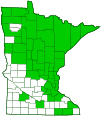woodland horsetail
(Equisetum sylvaticum)
Conservation • Wetland • Description • Habitat • Ecology • Use • Distribution • Taxonomy
Description |
||
|
||
Height |
||
10″ to 27″ |
||
Similar Species |
||
| This is the only horsetail on which the branches are themselves branched. | ||
Habitat |
||
Moist. Coniferous, deciduous, and mixed forests, thickets, meadows, bogs, swamps, and streambanks. Partial shade. |
||
Ecology |
||
Sporulation |
||
April through May |
||
Pests and Diseases |
||
|
||
Use |
||
|
||
Distribution |
||||
|
Sources |
|||
| 4/20/2023 | ||||
Nativity |
||||
Native |
||||
Occurrence |
||||
|
||||
Taxonomy |
|||
| Kingdom | Plantae (Plants) | ||
| Division | Tracheophyta (Vascular Plants) | ||
| Subdivision | Polypodiophytina | ||
| Class | Polypodiopsida (ferns) | ||
| Subclass | Equisetidae (horsetails) | ||
Order |
Equisetales (horsetails) | ||
Family |
Equisetaceae (horsetail) | ||
Genus |
Equisetum (horsetails) | ||
| Subgenus | Equisetum | ||
There are 15 species of Equisetum, which is the only living genus in the family Equisetaceae, which is the only family in the order Equisetales, which is the only order in the class Equisetopsida. The history of Equisetum has been traced 300 million years to the Cretaceous period, and possibly to the Triassic period. That could make Equisetum the oldest living genus of vascular plants. The genus Equisetum is divided into two subgenera, Equisetum and Hippochaete. Woodland horsetail is one of the eight species in the subgenus Equisetum. Six of those eight species are found in North America. Five are found in Minnesota. |
|||
Subordinate Taxa |
|||
This pant is highly variable. Some sources describe three subspecies based on the amount of branching and the texture of the branches. Most sources do not recognize any subspecies. |
|||
Synonyms |
|||
Equisetum sylvaticum var. multiramosum Equisetum sylvaticum var. pauciramosum |
|||
Common Names |
|||
The stems are regularly branched, the branches appearing in a whorl at each stem node. This gives the plant the appearance of a horse’s tail, giving rise to the common name “horsetail”. |
|||
sylvan horsetail wood horsetail woodland horsetail |
|||
Visitor Photos |
|||||
Share your photo of this plant. |
|||||
| This button not working for you? Simply email us at info@MinnesotaSeasons.com. Attach one or more photos and, if you like, a caption. |
|||||
|
|||||
MinnesotaSeasons.com Photos |
|||||
Fertile Stems |
|||||
Plant |
|||||
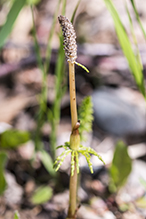 |
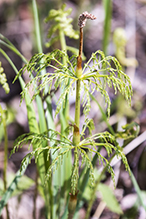 |
||||
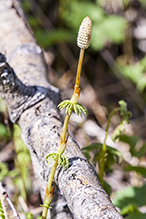 |
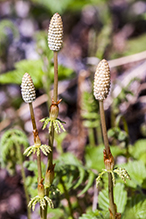 |
||||
Cones |
|||||
 |
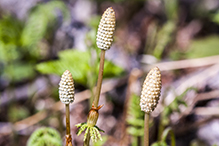 |
||||
 |
|||||
Cone |
|||||
 |
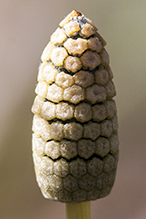 |
||||
Branches |
|||||
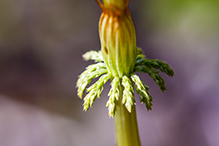 |
|||||
Sheath |
|||||
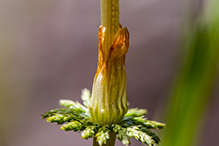 |
|||||
Teeth |
|||||
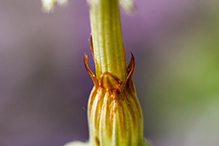 |
|||||
Sterile Stems |
|||||
Plant |
|||||
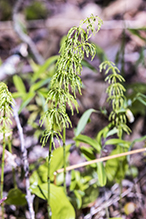 |
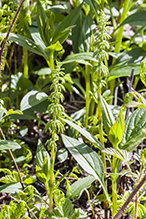 |
||||
Sheath |
|||||
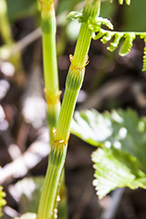 |
|||||

Slideshows |
||

Visitor Videos |
|||
Share your video of this plant. |
|||
| This button not working for you? Simply email us at info@MinnesotaSeasons.com. Attach a video, a YouTube link, or a cloud storage link. |
|||
Other Videos |
|||
| Bospaardestaart Equisetum Sylvaticum 11 mei 2011.wmv Wim Derks |
|||
About
Uploaded on May 12, 2011 Een nogal zeldzame, bedreigde plant op een onverwachte plek gevonden! Google translation: A rather rare , endangered plant found in an unexpected place! |
|||

Visitor Sightings |
|||||
Report a sighting of this plant. |
|||||
| This button not working for you? Simply email us at info@MinnesotaSeasons.com. Be sure to include a location. |
|||||
|
|||||
MinnesotaSeasons.com Sightings |
|||||

|
Created: Last Updated: © MinnesotaSeasons.com. All rights reserved. |
